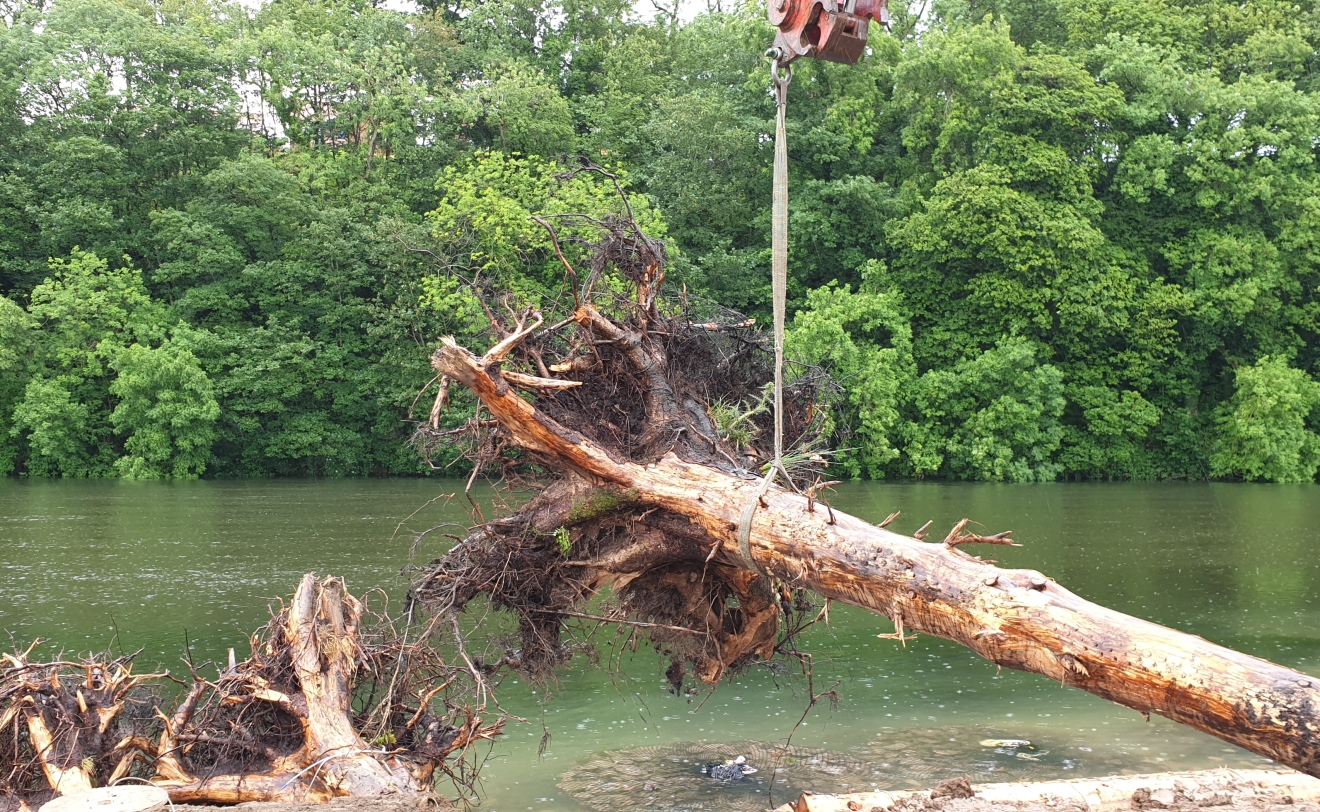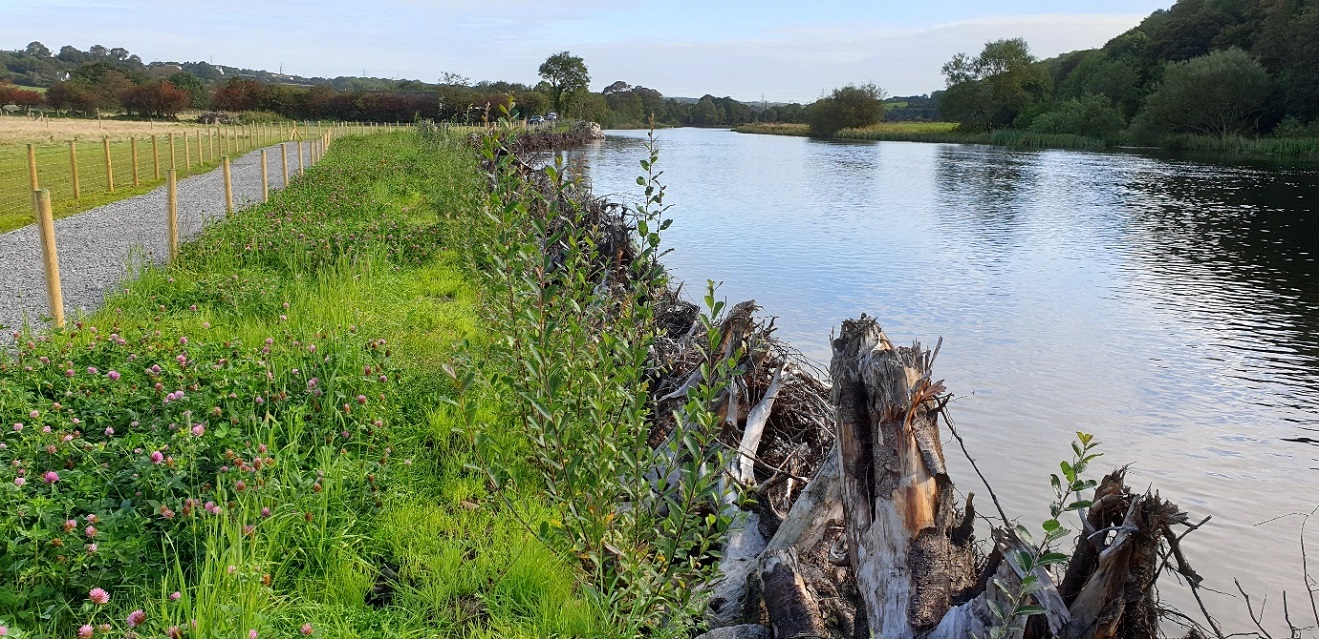As an ecologically sensitive site the use of traditional hard engineered bank protection was not an option and Salix's bioengineered designs were favoured.
Following recent flooding in west Cumbria, significant bank erosion led to the loss of an access track and compromised the integrity of a weir.
Salix were contracted to reinstate the riverbank with a bioengineering solution. The solution consisted of Salix AquaRockBags and large live rootwads, to provide erosion protection in a high energy environment.
Protecting Vital Infrastructure On a Main River Using Low Carbon, Environmentally Sensitive Solutions.
Recent major flooding (winters of 2009 & 2015) eroded a significant length of the River Derwent, impacting key assets:
- the access track to the south of Yearl Pumping Station,
- the 160m bank length between the Yearl Weir and Yearl Pumping Station, and
- the bank immediately upstream of Yearl Weir, threating the structural stability of the weir
River cuts new channel
It was necessary to provide an alternative access to the weir, needing some form of protection against future erosion.

Erosion processes during flood events were twofold, firstly severe bank erosion caused by toe scour, bank failures and associated bank retreat and secondly the stripping back of the turf (sod) layer on the flood plain, exposing further floodplain soils to erosion.
The river also began to cut a new channel on a shorter course across the floodplain, bypassing a large weir structure, a process known as avulsion (abrupt change in course of a river). After the 2013 flood the bank had retreated over 6 metres and large scour pools have formed at the toe of the riverbank, leaving the weak alluvial banks primed for further erosion in smaller flood events.
Science supported solutions
A detailed bathometric survey was undertaken followed by hydraulic modelling of the existing channel and flood plain to build up a map of bed, bank and floodplain flow velocities and map shear stress for 1:200-year flood return events.
This data informed the design process.
Once a design had been agreed then a further model was produced to inform the client and statutory permit agency of any potential future channel change as a result of the bank reinstatement works.

As an ecologically sensitive site the use of traditional hard engineered bank protection was not an option and bioengineered designs were favoured.
Bioengineering solutions and AquaRockBags are the best option in a sensitive environment
The scour pools provided a particular challenge, as bioengineering techniques would not control the rate of erosion in 2-3 metres of water.
Large rip rap stone was also ruled out due to the geomorphological impact downstream and the adverse ecological impact.
The solution to controlling the erosion in the scour pools came in the form of AquaRockBags.
AquaRockBags are a mesh bag that is filled with graded, angular stone that can be stacked in scour pools in deeper water. These were installed to average water level and above this level more traditional bioengineering solution could be used.
AquaRockBags support vegetation, invertebrates and fish
The smaller stone in the Aqua Rock bags provides high interstitial space for benthic invertebrates, fish fry as well as supporting submerged and marginal macrophyte vegetation communities.
The smaller stone size also negates the issue of the downstream morphological impacts that larger rip rap has on channel processes. This is as the high interstitial voids between the small stones absorb flows locally and does not create turbulent of reflective flows as is associated with larger rip rap stone.
From average low flow water level, a continuous run of linear toe logs, rootwads and live willow staking were installed. Additional tree planting on the reprofiled river banks and the adjacent floodplain will slow flood flows and reduce erosive force in the future.
The banks were also protected with a high performance turf reinforcement system, using a combination of woven HP-TRM and Gripple ground anchors. The matting was extended from the bank to also cover the area where avulsion process had created the new river channel in the floodplain and where future major floods would otherwise try to reform this channel feature.
Construction commenced in spring, finishing in early summer. Since installation, the vegetation has fully established with an abundance of native species. Fry, lamprey and eels thrive in the silted margins, with improved marginal habitat to assist with cover and invertebrate abundance. The large rootwad revetment will sustainably protect the bank whilst offering substantial environmental benefits.
Watch the video here.











